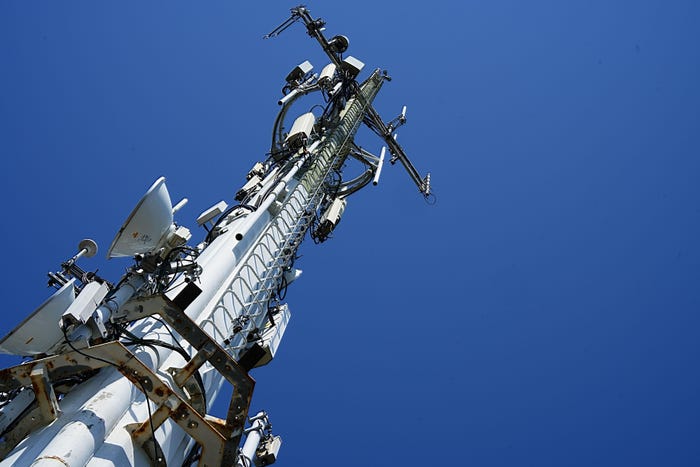After messaging, is it time to update 5G calling too?
The RCS standard adds multimedia to text messages. Now, the wireless industry is hoping '5G New Calling' will add multimedia, including video and documents, to standard, voice-only calls.

Following years of work, the US wireless industry appears poised to embrace rich messaging services based on the RCS standard. Now, some in the sector are turning their sights to rich calling services.
Last year, the global GSMA wireless industry trade association issued a white paper on "5G New Calling" (5GNC). The document helps to lay out a vision of voice calling on steroids, a service that could combine video, text, images, documents and various audio services in a way that would "transform a regular call into a more rewarding or more efficient communication medium."
The GSMA's document offers a handful of examples of what 5GNC might eventually support:
Restaurants could deliver their menu to a caller over a voice call, essentially talking them through their options while the caller places their order.
Retail stores could offer a real-time translation service that would deliver captioned comments atop a video call.
Family members could use augmented reality calling that overlays effects onto each caller, such as "happy birthday" balloons in the background of a video call.
And executives could share files and other documents inside of a voice call.
The GSMA said that many such features could be delivered over a "mini app" structure using operators' IP Multimedia Subsystem (IMS) technologies.
"The New Calling Mini-App is more akin to WebApps currently being defined in the W3C Consortium. A New Calling Mini-App is generally invoked during a call or prior to the completion of the call establishment to provide multiple features for users to improve their experience," the association wrote.
Treading the path of RCS
Thus, 5GNC could be compared to the GSMA's Rich Communications Services (RCS) standard. 5GNC looks to add video, text and other types of data to voice calls, like RCS does with text messages.
However, the history of RCS is bumpy, to say the least.
RCS technology first surfaced more than a decade ago, when the GSMA was marketing it under the Joyn brand. The association's hope was that operators such as Vodafone and Verizon could use RCS to create all sorts of interoperable multimedia messaging features similar to Facebook's WhatsApp – essentially supercharging standard, text-only SMS messaging.
But the technology has mostly floundered, particularly in the US, as big companies like Apple have avoided supporting it.
That's changing however. Apple is now planning to add RCS to its iOS iPhone operating system.
5GNC likely would face a similarly challenging path toward adoption. After all, like most international telecommunication services, it requires cooperation among a wide variety of ecosystem players. Services like WhatsApp or iMessage, meanwhile, sprung fully formed from one company.
There's another parallel between RCS and 5GNC: Both technologies essentially mimic existing offerings. RCS was a wireless industry response to the rise of over-the-top (OTT) messaging services like WhatsApp and iMessage. Similarly, 5GNC could be viewed as a wireless industry reaction to the rise of multimedia calling platforms like Microsoft Teams and Cisco Webex. Such enterprise-focused offerings allow business users to make voice calls alongside other services like video messaging, document exchange and screen sharing.
Steps forward
Already some companies have begun touting a vision beyond voice calling.
Nokia, for example, generated a significant amount of attention with its demo of the new Immersive Voice and Audio Services (IVAS) codec. "The IVAS codec allows consumers to hear sound spatially in real-time instead of today's monophonic smartphone voice call experience," the company said.
Nokia said its CEO – Pekka Lundmark – recently placed an IVAS call to Stefan Lindström, Finland's ambassador of digitalization and new technologies, from Nokia's campus in Espoo, Finland.
The 3GPP recently boasted of its work to include IVAS in its Release 18 collection of technologies. The 3GPP is the primary standards group behind 5G, and it typically releases new batches of technologies for the standard once or twice a year.
But voice calling upgrades aren't moving very quickly in the wireless industry. For example, AT&T continues to use Voice over LTE (VoLTE) technology that routes its customers' voice calls over the operator's 4G LTE network.
AT&T officials confirmed recently that the operator continues to test Voice over 5G New Radio (VoNR) technology, but they didn't have any updates beyond that effort.
Broadly, wireless network operators like AT&T are working to streamline their finances and reduce their network spending in an effort to recoup some of their massive 5G networking investments of the past few years.
That likely leaves newer, complex technologies like 5GNC on the back burner.
About the Author(s)
You May Also Like



.jpeg?width=700&auto=webp&quality=80&disable=upscale)










